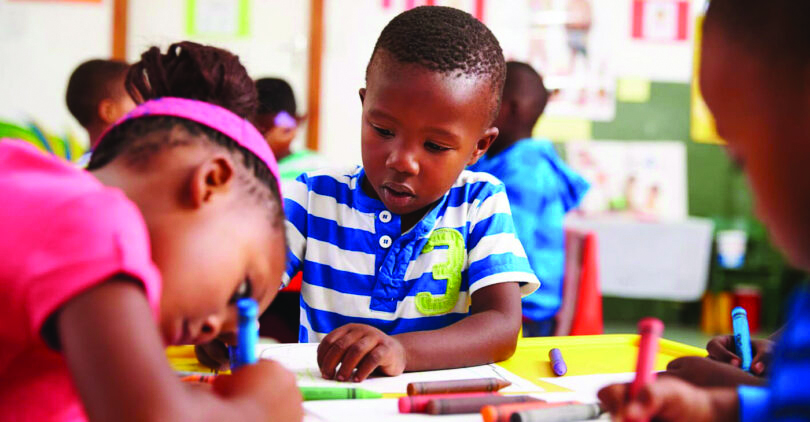Early Childhood Education
NIEER just released its 2023 State of Preschool Yearbook, which annually tracks state-funded preschool enrollment, funding, and quality across states. This year’s report shows that during the 2022-2023 school year states enrolled over 1.63 million children in preschool, marking a 7% surge compared to the preceding year.
By W. Steven Barnett, Ph.D., senior co-director, and founder, National Institute for Early Education Research
NNPA Newswire — Despite strides in preschool enrollment across the country, access to quality early education remains inequitable and heavily skewed by geography, according to our new National Institute for Early Education Research (NIEER) analysis. State-by-state disparities in preschool access, quality, and funding are widening each year as some states take leaps forward while others still do not have a program. How each state chooses to move forward—and whether the federal government helps—will determine how much real progress is made in helping America’s three- and four-year-olds access quality preschool.
 NIEER just released its 2023 State of Preschool Yearbook, which annually tracks state-funded preschool enrollment, funding, and quality across states. This year’s report shows that during the 2022-2023 school year states enrolled over 1.63 million children in preschool, marking a 7% surge compared to the preceding year. Preschool enrollment reached 35% of four-year-olds and 7% of three-year-olds, with state expenditures reaching $11.73 billion, an 11% increase from 2021-2022 when adjusted for inflation.
NIEER just released its 2023 State of Preschool Yearbook, which annually tracks state-funded preschool enrollment, funding, and quality across states. This year’s report shows that during the 2022-2023 school year states enrolled over 1.63 million children in preschool, marking a 7% surge compared to the preceding year. Preschool enrollment reached 35% of four-year-olds and 7% of three-year-olds, with state expenditures reaching $11.73 billion, an 11% increase from 2021-2022 when adjusted for inflation.
Despite progress, most states still need to catch up to their pre-pandemic level of preschool enrollment. We believe the research is crystal clear that children who attend high-quality preschools are better prepared when they enter kindergarten, laying a foundation for later success. However, programs must be high quality to deliver those results, and in 2024, states are more uneven than ever in their preschool funding and quality standards.
Every family should have the opportunity to enroll their three- and four-year-olds in a quality pre-k program, no matter where they live or their economic situation. We encourage state and federal leaders to help families gain access to high-quality, full day, adequately funded early learning opportunities that will help children develop and parents earn a living. Our new report finds that state-funded preschool programs have bounced back unevenly from the COVID-19 Pandemic. A record number of 16 states plus the District of Columbia are now committed to universal preschool, yet most of those states are far from reaching that goal. A key question for the future is whether states will increase investments enough to keep promises regarding program expansion and quality, including adequate pay for the workforce.
Across states, spending ranges from more than $16,000 per child to barely $2,000 per child. Only five states met all ten research-based minimum quality benchmarks recommended by NIEER (Alabama, Hawaii, Michigan, Mississippi, and Rhode Island). More than twice as many children attend preschool programs meeting fewer than half of NIEER’s quality standards benchmarks than programs meeting nine or 10. Legislators in several states are currently considering pre-k funding increases for the next fiscal year, including major proposals in Massachusetts and Michigan and a New Hampshire bill that would create a state-funded preschool program in that state.
Last month, Georgia state lawmakers approved a nearly $100 million package to make critical quality improvements while expanding the state’s lottery-funded pre-k program, including salary parity for pre-k lead and assistant teachers with K-12; capping class size at 20 children; and increasing classroom start-up grants. Our new report calls on the federal government to offer states financial incentives to support high-quality preschool education. Over the last 21 years, NIEER’s State of Preschool publications have found that red and blue states alike are increasingly prioritizing preschool yet struggling to pay for it. Given the long-term return on investment of quality preschool, helping states pay for quality preschool expansion should be an area of bipartisan consensus in Congress.
NIEER estimates an additional $30 billion could allow states to provide a quality full school-day preschool program to all four-year-olds. If the federal government increased support for preschool education to the states by just $1.5 billion per year over the next ten years, the federal government would cover half that cost in 10 years. “With the pandemic in the rearview, it’s time for state and federal leaders to choose whether and how they are going to support high-quality preschool,” said Allison Friedman-Krauss, Ph.D., the report’s lead author. “Will this be the turning point needed for the country to make real progress towards high-quality universal preschool? Will programs serve both three- and four-year-olds? Will investments be enough to ensure that programs are effective? Will states support an equitable mixed-delivery model for preschool incorporating both existing childcare programs and public schools? How will states recruit, support, and retain preschool teachers? These decisions will impact millions of children for years to come.”

